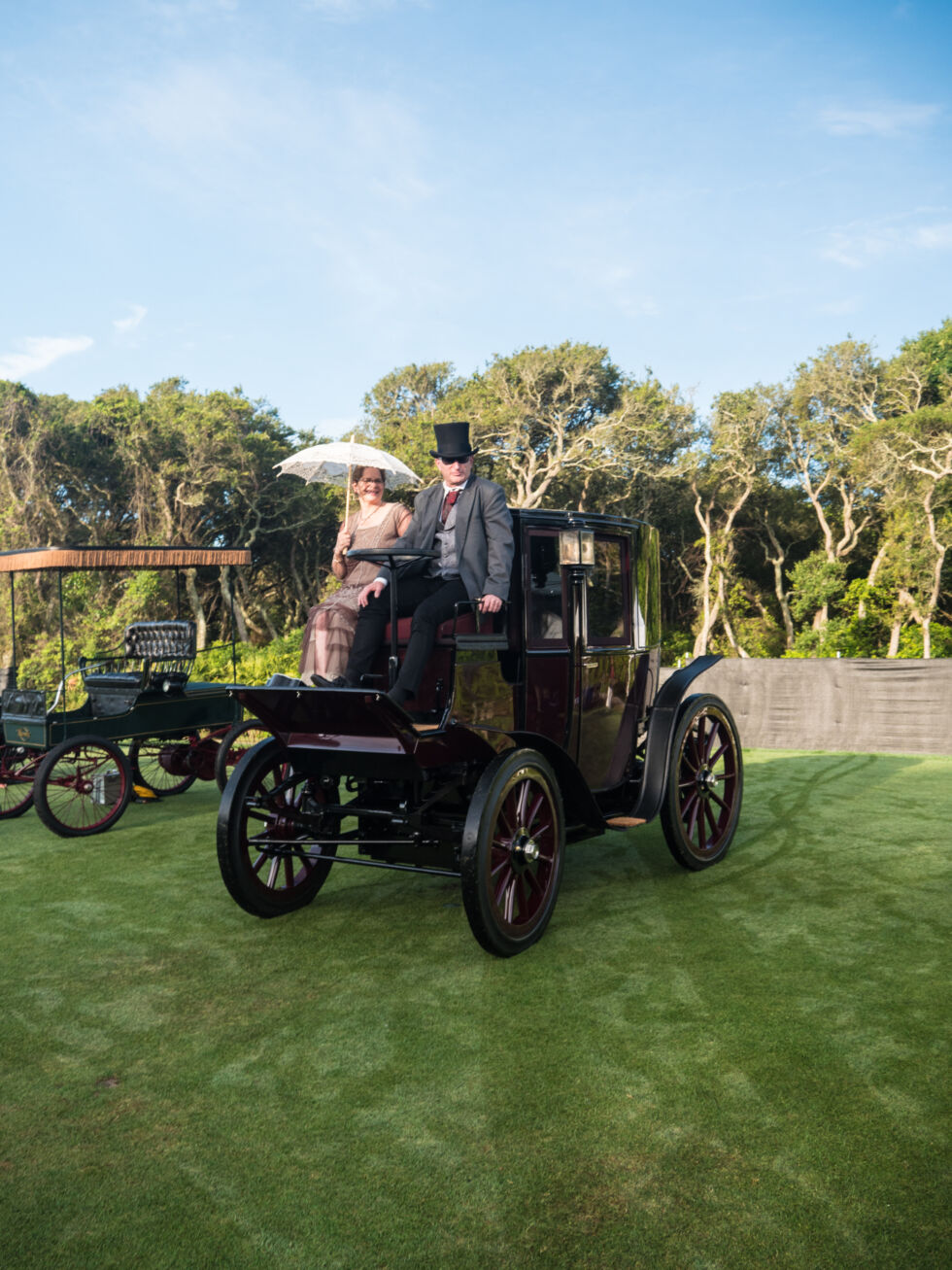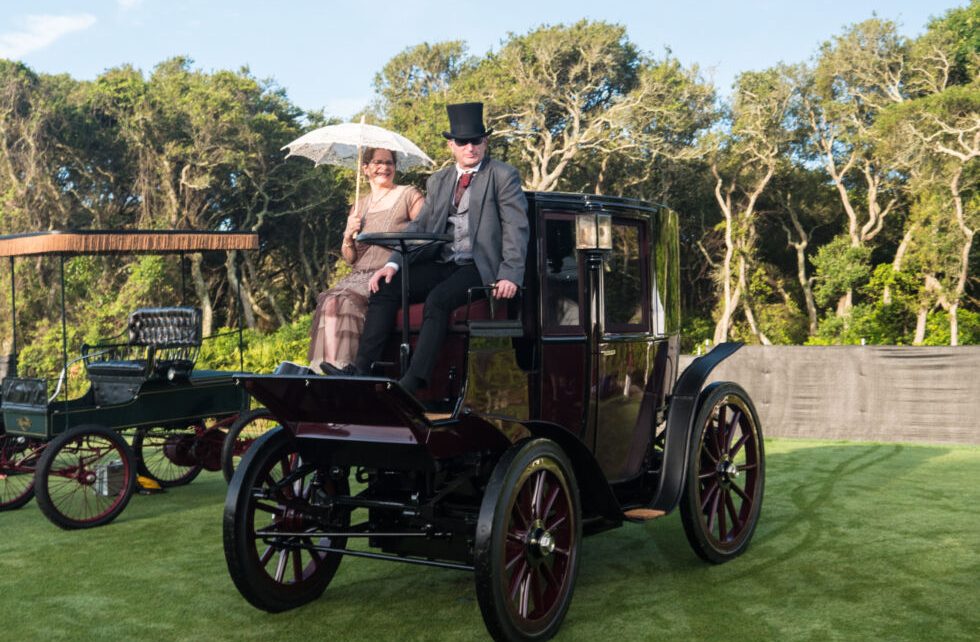-

This is a 1905 Columbia XXXV Open Drive Brougham, which won best in class for the EVs. This Edwardian monster is a twin-motor design. [credit: Jonathan Gitlin ]
AMELIA ISLAND, FLORIDA—It’s rare to see an electric vehicle among the polished and restored vintage cars of a concours d’elegance. (That’s French for a very fancy car show.) And that’s despite the fact that electric power was a credible alternative to the internal combustion engine for the first few decades of the automobile. But this year’s Amelia Island Concours d’Elegance went some way to rectifying that. Under the oppressive humidity, nestled between the usual concours fare of interwar phaetons and a wonderful assortment of Porsche 935s, there was an entire class of ancient EVs on display.
And what a varied class it was. A marvelously named Electrobat IV 1895 was the oldest EV to take to the well-manicured golf course. They were still in the earliest stages of figuring out this whole automobile thing 126 years ago and the Electrobat IV, running on skinny buggy tires, still looks like it’s missing its horse. But the real innovation that Pedro Salem and Henry Morris came up with for the Electrobat was its electric powertrain, consisting of a 1.5 hp (1.1 kW) motor and a 350 lb (159 kg) battery. They went on to build a fleet of Electrobat taxis that operated in New York at the beginning of the last century.
The Waverley Electric from 1901 was nearly primitive, and again there’s the impression that it’s incomplete without an accompanying equine. But the 1901 Waverley rides on pneumatic treaded tires, it has headlights, and is powered by a 2.5 hp (1.8 kW) motor. A Waverley Four-Passenger Coupe from 1910 shows how far the Indianapolis-based company developed over a decade; while obviously an antique, the red two-door fits most definitions of a car.





